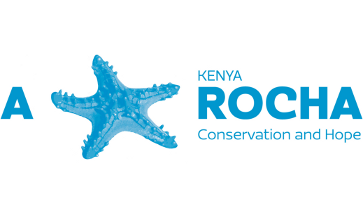Over half a million waterbirds counted since 2000!
Every month, a team of A Rocha Kenya scientists and volunteers go out and count populations of waterbirds present at two local sites. Over the past 20 years, they have completed 186 surveys at these 2 key sites, counting a total of 693 632 waterbirds, from 113 species.
We have recently published this dataset online on the Global Biodiversity Information Facility, so it is now freely accessible for scientific studies and research. Click on the link below to take a look!
Waterbird Counts at Sabaki River Mouth and Mida Creek
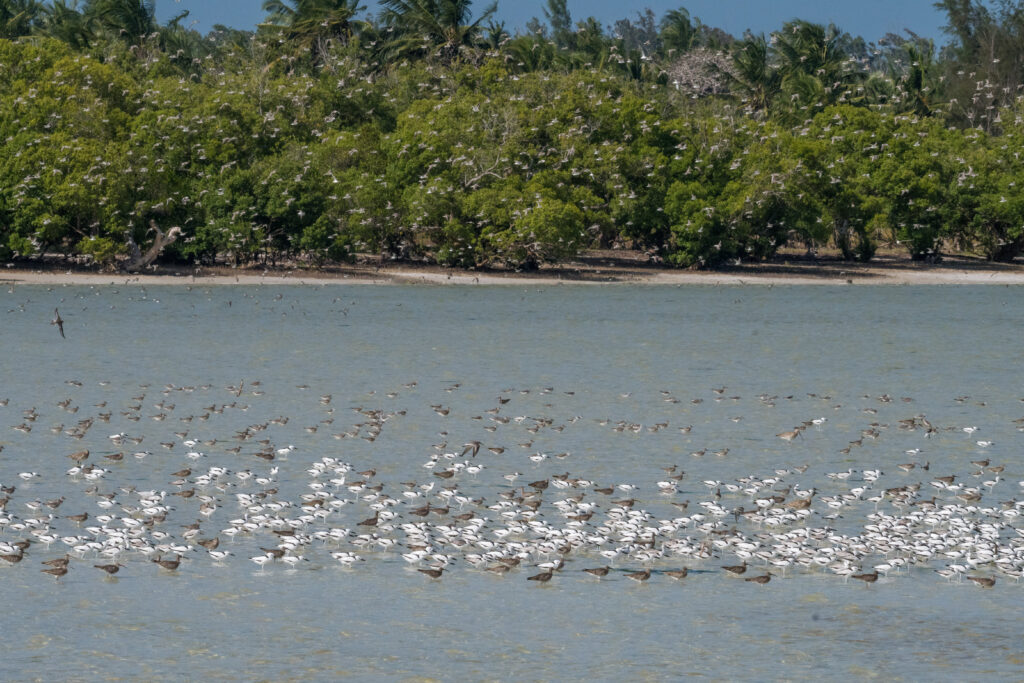
Waterbird counts involves counting large flocks of birds… which can take off at any moment!
Where do we count waterbirds?
We monitor waterbird populations at two local sites: the Sabaki River Mouth north of Malindi, which includes a diversity of attractive habitats for waterbirds (sandflats, salt marshes, mudflats, grassland, mangroves, and coastal scrub) and Mida Creek, an intertidal marine area of 580ha surrounded by mangroves.
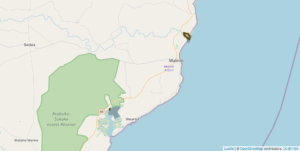
Map showing the path followed for the counts at Sabaki River Mouth (North) and Mida Creek (South), Kenya
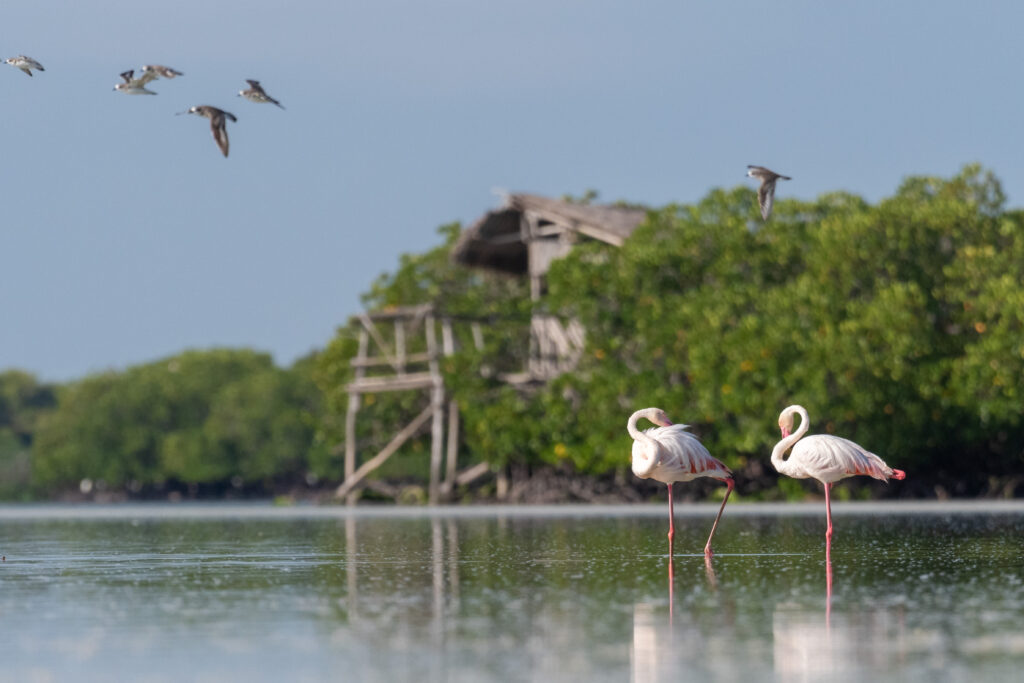
The Mida Creek Bird Observatory, built by A Rocha Kenya, from which birds in the creek are counted.
Both of these areas constitute critical passage sites for migrant birds and hold a significant proportion of resident waterbirds. As such, they are both recognized as International Bird Areas (IBAs).
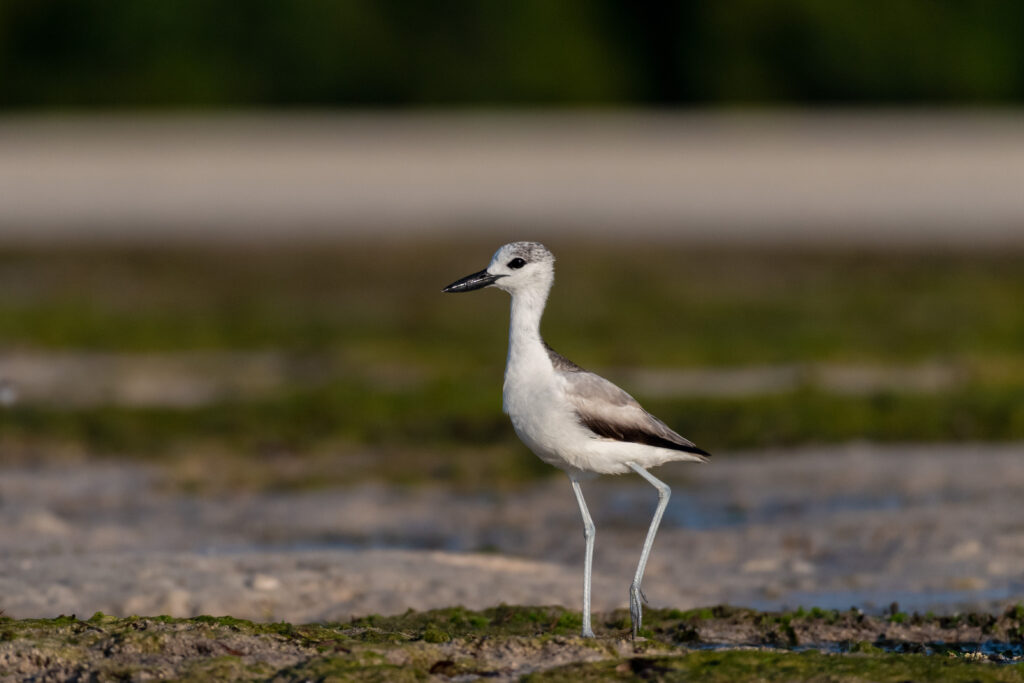
Mida Creek holds internationally important populations of Crab Plover, an emblematic local species!
Explore the data!
Why count waterbirds?
Waterbirds are bird species that are ecologically dependent on wetlands¹ (ecological systems permanently or seasonally flooded by water). Since 1900, 64% of wetlands have been lost, with drastic consequences on waterbird populations². This habitat is also particularly impacted by global warming, which is expected to have a pronounced effect on tundra and intertidal habitats, with repercussions for waterbirds.
Waterbird monitoring is critical to monitor the effects of these changes on the millions of birds that depend on these habitats, detect any changes and take action to protect habitats accordingly.
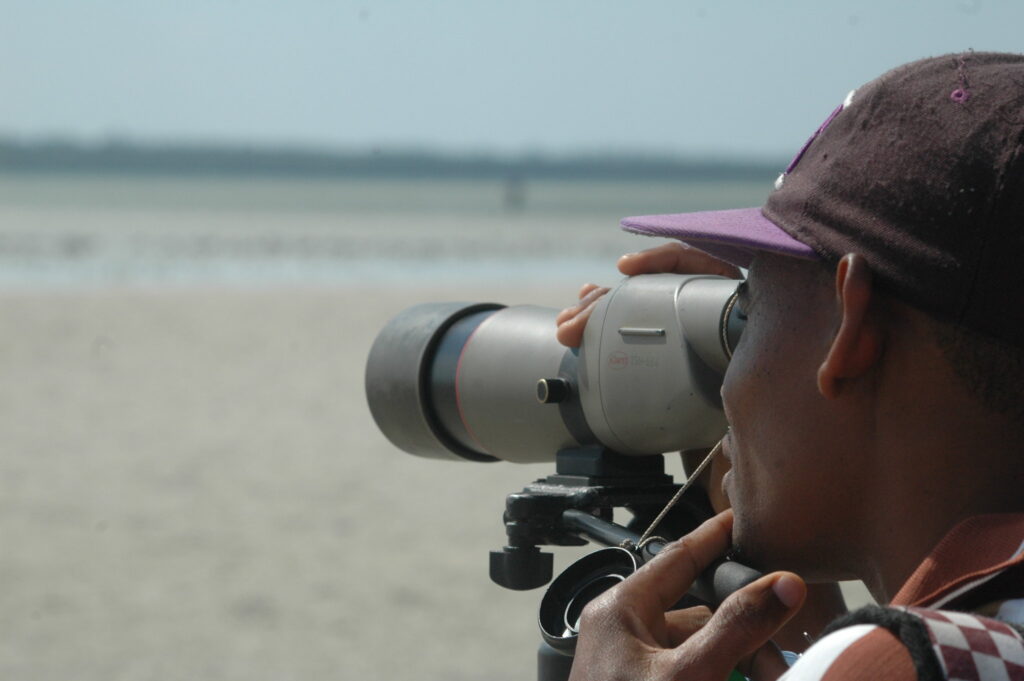
Kirao, a faithful waterbird counter for the past 8 years, hard at work counting large flocks at a distance.
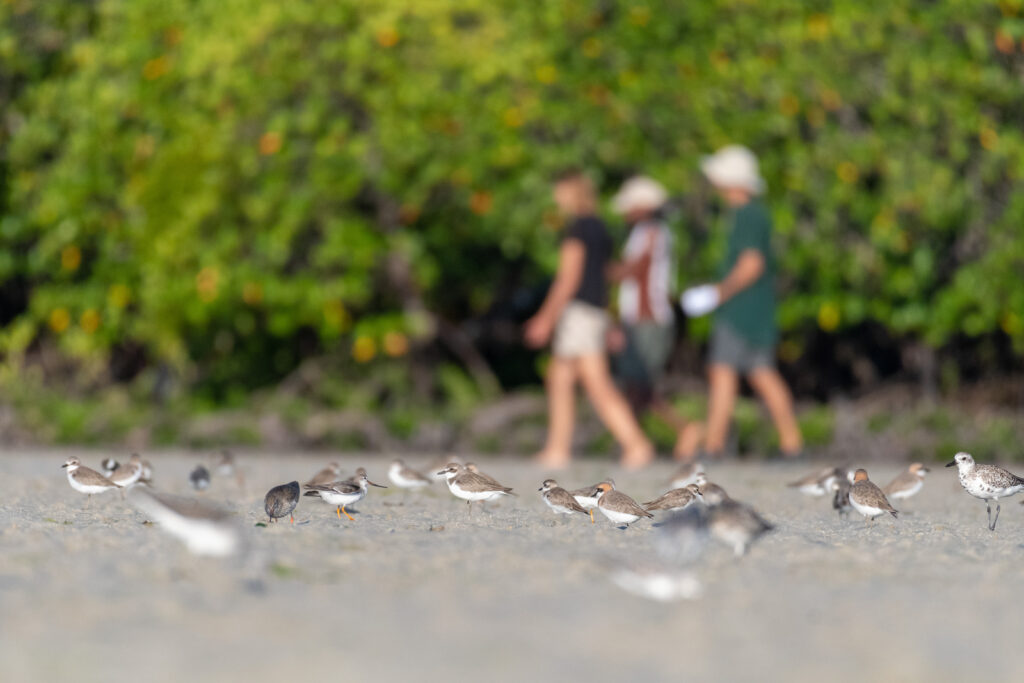
Waterbird counts can also hold some exciting surprises! Can you spot the rare bird on this photo?! (answer at the end of the article)
Waterbirds are also well-known indicators of the quality of natural environments, their abundance or lack thereof can help alert on the deterioration of an ecosystem, and lead us to take action to better protect it. Wetlands which hold a certain percentage of the global population of a species can benefit from special protection, enabling better conservation of key habitats.
What will this dataset be used for?
This dataset is now available in open access, and can be used to:
- monitor waterbird populations at these two migratory stopover and non-breeding sites
- assess short- and long-term trends of wader populations
- learn about seasonality patterns in arrival and departure dates of migrant waterbirds (such as this study on the seasonal abundance of waterbirds in Sabaki)
- study the impact of climate change, habitat change, and human disturbance
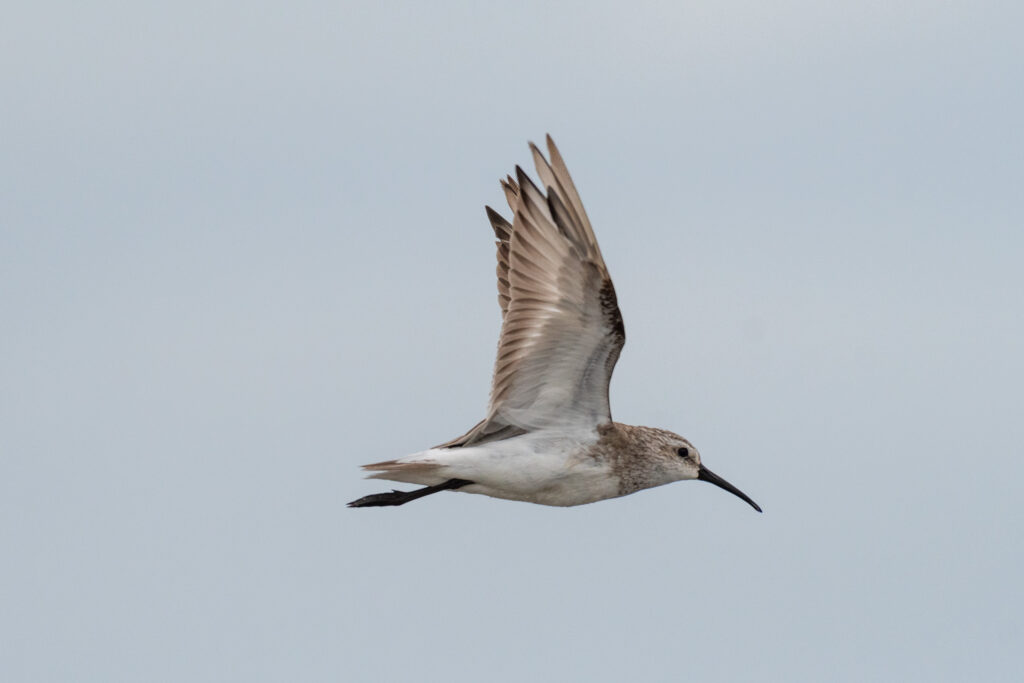
This Curlew Sandpiper spent the European winter in Mida Creek and molted to be ready to fly back! Can you spot the new feathers? (tip: the shorter ones are the new ones!)
Want to explore more?
- View the dataset published on GBIF.
- Explore annual abundance rates for any of the waterbird species we counted in this interactive web app
- Read more on the data collected, and visualize habitat change in Sabaki with animated GIFs on this Github page.
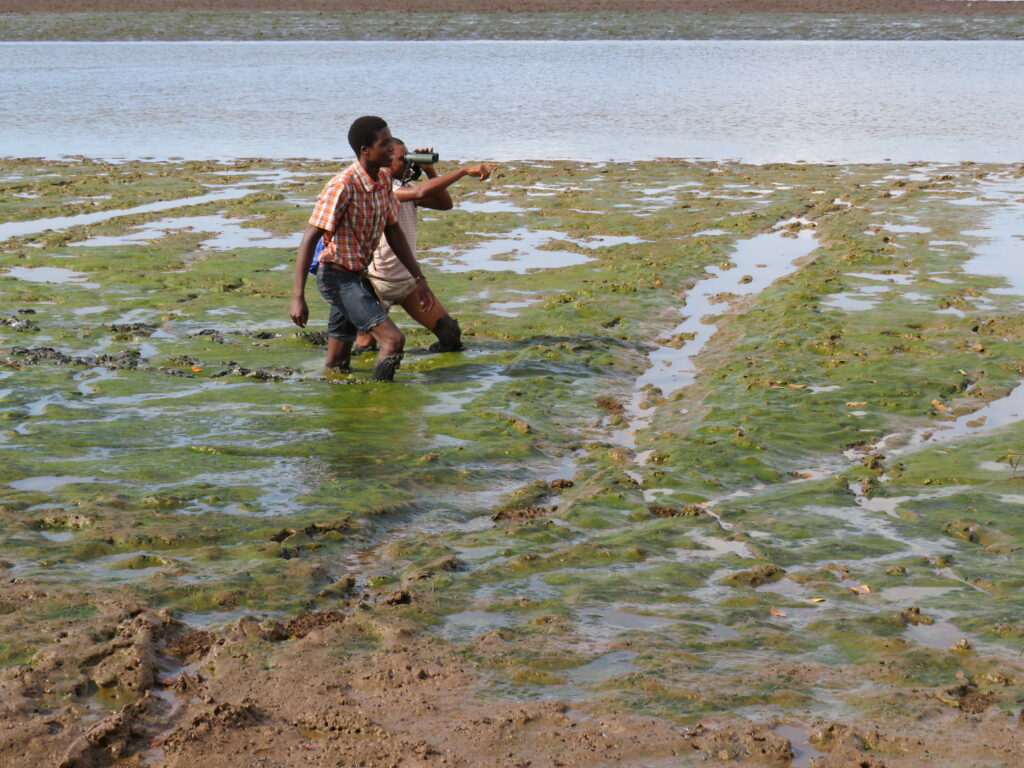
Braving the mud, hot sand, & hippos – Sabaki counts are always a bit of an adventure!
Rare bird on photo: Common Redshank, uncommon in Kenya!
